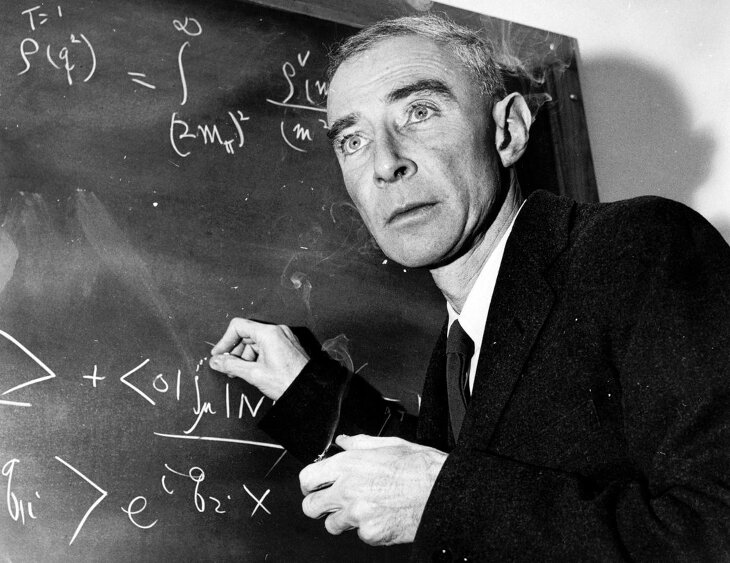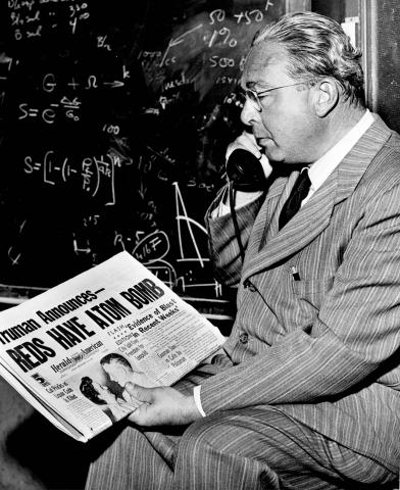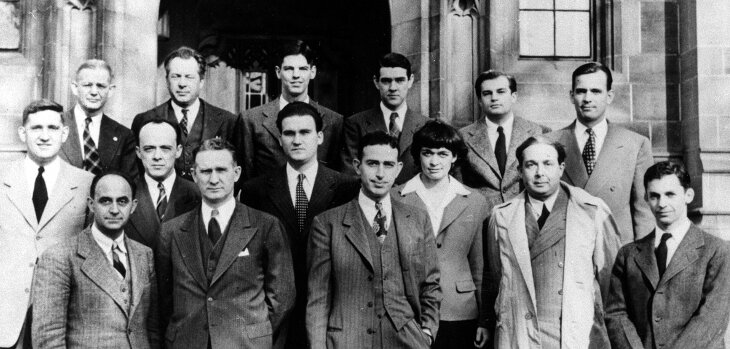 Vampire Weekend's Surprising Jewish Stories
Vampire Weekend's Surprising Jewish Stories


6 min read
The little-known story of the Jewish impact on nuclear energy.
The number of Jews involved in splitting the atom in the 20th century is truly staggering. For better or for worse nuclear fission, that gave birth to nuclear energy and the atomic bomb, has been one of the greatest scientific discoveries of all time, unleashing immense power for energy and destruction.
The term “nuclear fission” was coined in Germany in 1939 by a female physicist named Lise Meitner. But being both a woman and Jewish, she was denied credit for her research which was given solely to her fellow German researcher, Otto Hahn, who later received the Nobel prize for his work. Meitner fled to Sweden to escape Nazi persecution and continued her research in Stockholm.
 Robert Oppenheimer
Robert Oppenheimer
In the first half of the 20th century, Germany was the world-leader in science and innovation and once the Nazis came to power in 1933, they directed much of this German knowhow toward their military-rocket technology and weapons of mass destruction. It was precisely this fear that Germany would be the first country to get a nuclear weapon that led the Jewish Hungarian physicist, Leo Szilard, to convince the great Albert Einstein, who was a pacifist, to co-write a letter to President Roosevelt urging him start a nuclear research program in the U.S. and beat the Germans to the A-bomb. The two physicists were refugees from Nazi persecution living in the US. This letter played a key role in convincing Roosevelt to launch “The Manhattan Project,” America’s program to build an atom bomb. 2
 Leo Szilard
Leo Szilard
The number of Jews involved in the project was astounding; the vast majority of the scientists were Jewish. Almost all of them were German, Hungarian or Austrian refugees. The list included: J. Robert Oppenheimer, Project director and nicknamed “The father of atomic bomb,” Edward Teller, Leo Szilard, Otto Frisch, Niels Bohr Felix Bloch, Hans Bethe, John von Neuman, Rudolf Peierls, Franz Eugene Simon, Hans Halban, Joseph Rotblatt, Stanislav Ulam, Richard Feynman, and Eugene Wigner. One of the few prominent non-Jews involved in the project, Enrico Fermi, left Italy to save his Jewish wife from fascist persecution.
There is little doubt that had the Nazis been more tolerant of Jews, Germany would have had an atomic bomb first.
Chaim Weizmann, himself a prominent chemist and Israel’s first president later wrote:
“Very few people … have any notion of the role which Jews have played in modern science, and particularly of their astounding share in the development of nuclear physics. … I have heard Einstein speak of ninety percent. … I am continuously struck by the utter disproportion of the Jewish contribution.” 3
These scientists realized the profound implications of creating such a weapon of mass destruction. As Oppenheimer witnessed the first test detonation of an atomic bomb on July 16th, 1945, he quoted from Hindu Bhagavad Gita, “Now I become death, the destroyer of all worlds,” yet he never expressed any regret about the Manhattan Project. He, like many others in the scientific and military communities recognized the urgency of getting the bomb before America’s enemies and realized that the war would have dragged on for far longer with far greater American casualties had the US military been forced to conquer Japan with conventional ground forces.
In his farewell speech to the Association of Los Alamos Scientists in November 1945, Oppenheimer summarized the necessity of the US creating the A-bomb:
“…all over the world men would be particularly ripe and open for dealing with this problem because of the immediacy of the evils of war, because of the universal cry from everyone that one could not go through this thing again, even a war without atomic bombs. And there was finally, and I think rightly, the feeling that there was probably no place in the world where the development of atomic weapons would have a better chance of leading to a reasonable solution, and a smaller chance of leading to disaster, than within the United States.”
The Jewish people’s relationship with the atom didn’t end with the Manhattan project:
The innovative and transformative impact of the Jewish people is disproportionate to their tiny size. Just .2% of the world’s population, Jews have won 22% of all Nobel prizes since 1901 4. British historian Paul Johnson, who recently passed away, wrote:
For the Jewish impact on humanity has been protean. In antiquity they were the great innovators in religion and morals. In the Dark Ages and early medieval Europe they were still an advanced people transmitting scarce knowledge and technology…Breaking out of the ghettos, they once more transformed human thinking, this time in the secular sphere. Much of the mental furniture of the modern world too is of Jewish fabrication. 5
Jews do not have a monopoly on innovation and not all Jewish “contributions” have been positive, but it seems that part of the collective “spiritual DNA” of the Jewish people is to challenge accepted norms, think outside the box, create and innovate. “The Manhattan Project” is yet another example of a group of Jews, with little or no Jewish education, who embodied the core value: “thou shall innovate.”
 Scientists of The Manhattan Project
Scientists of The Manhattan Project
Perhaps Rabbi, Lord Jonathan Sacks said it the best: “To be Jewish, to be a child of Abraham, is to have the courage to be different, to challenge the idols of the age, whatever the idols and whichever the age.” 5
View this post on Instagram

Lise Meitner converted to Lutheranism. Many of the other Jews mentioned in this article were self-avowed Atheists. Einstein said he believed in G-d in the Spinoza sense, which is more or less the equivalent of nature, and certainly not the G-d of the Torah. In the "Oppenheimer" film, the most "Jewish Jew" was the film's big villain, Lewis L. Strauss, who was a classic Reform Jew and President of Temple Emanuel in New York City.